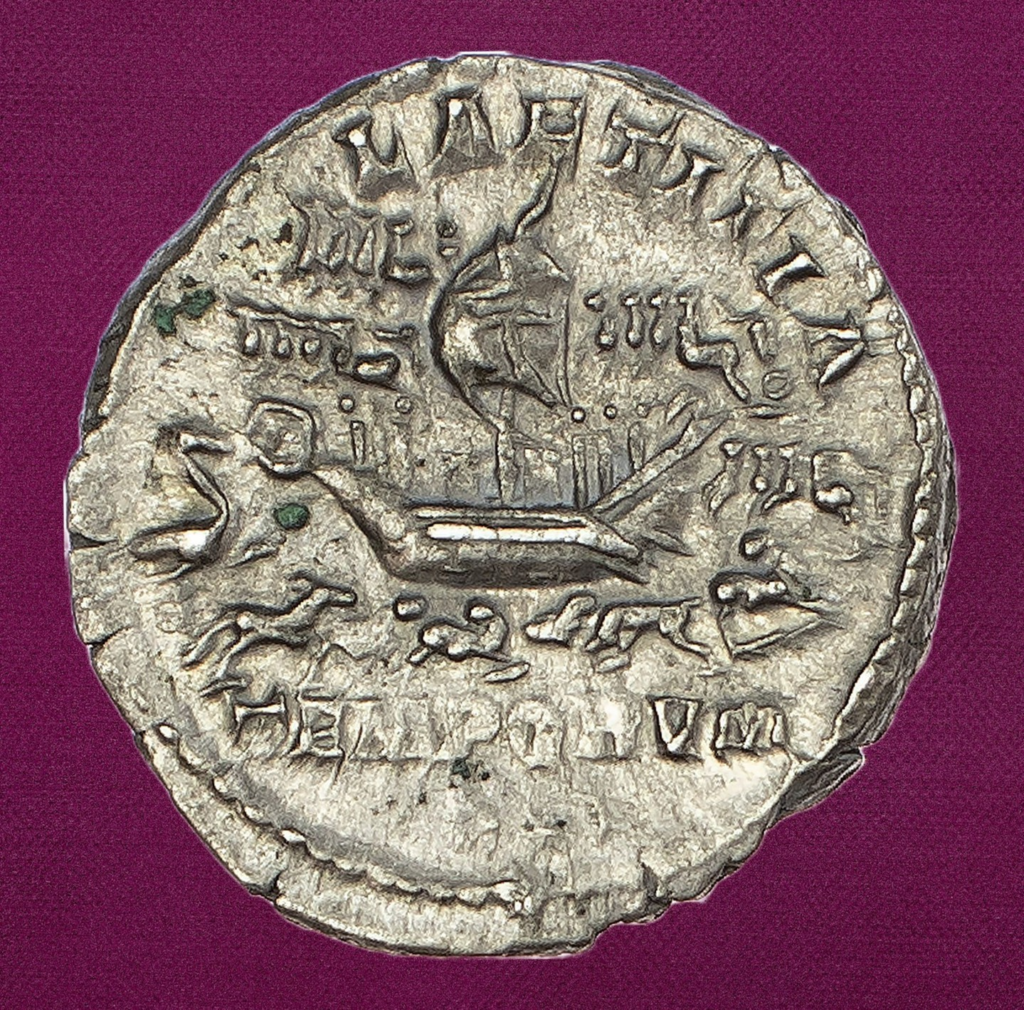Lucius Septimius Severus shown on the obverse, was a Roman emperor from 193 to 211. He was born in Leptis Magna (present-day Al-Khums, Libya) in the Roman province of Africa. As a young man he advanced through the customary succession of offices under the reigns of Marcus Aurelius and Commodus. Severus seized power after the death of the emperor Pertinax in 193 during the Year of the Five Emperors.

The Circus Maximus seen on the reverse decorated as a ship (Latin for “largest circus”) is an ancient Roman chariot-racing stadium and mass entertainment venue in Rome, Italy. The Circus was Rome’s largest venue for ludi, public games connected to Roman religious festivals.

Ludi ranged in duration and scope from one-day or even half-day events to spectacular multi-venue celebrations held over several days, with religious ceremonies and public feasts, horse and chariot racing, athletics, plays and recitals, beast-hunts and gladiator fights. Some included public executions.
Over the several centuries of its development, the Circus Maximus, depicted in this coin, became Rome’s paramount specialist venue for chariot races.
By the late 1st century AD, the Colosseum had been built to host most of the city’s gladiator shows and smaller beast-hunts. Eventually, 135 days of the year were devoted to ludi.


